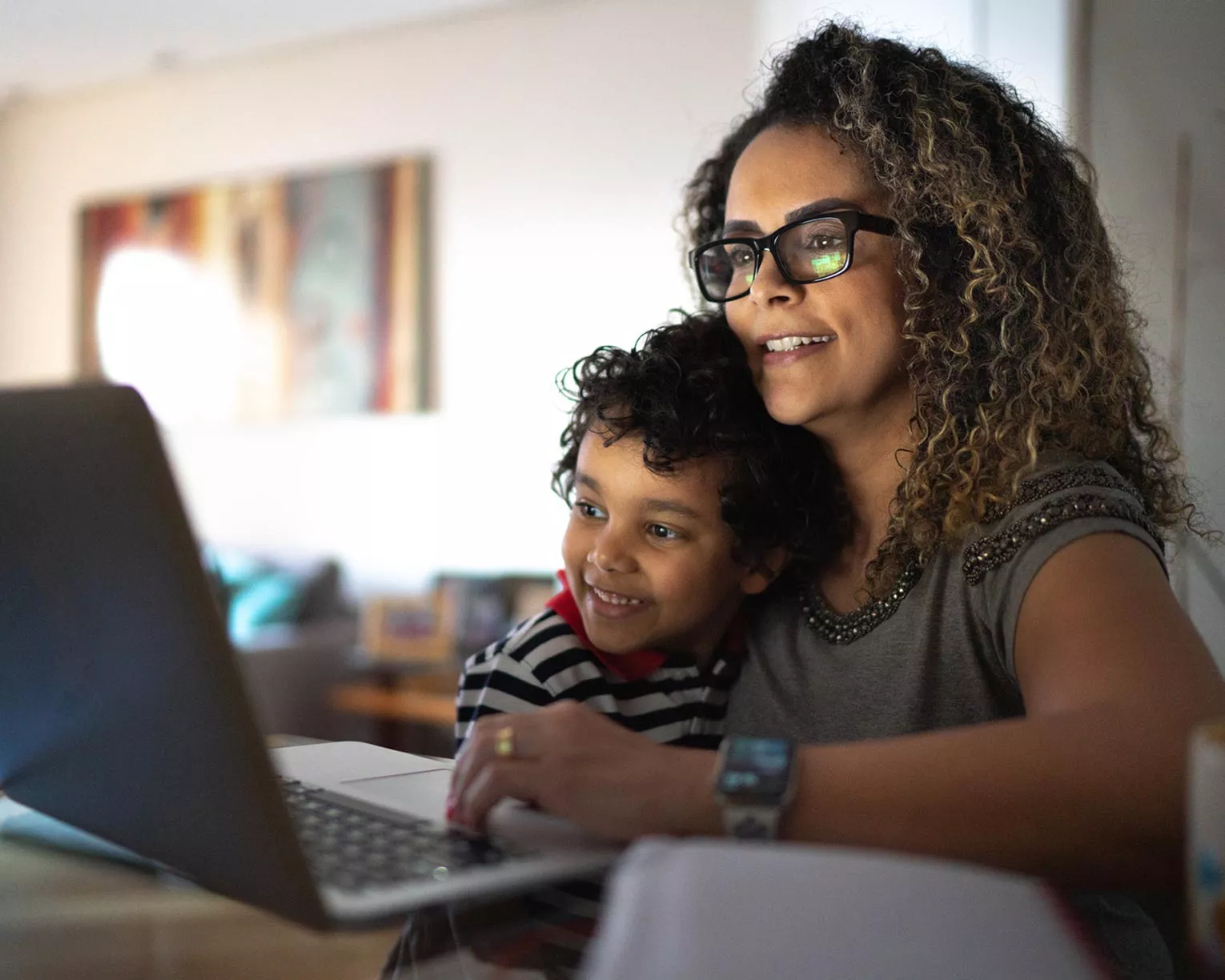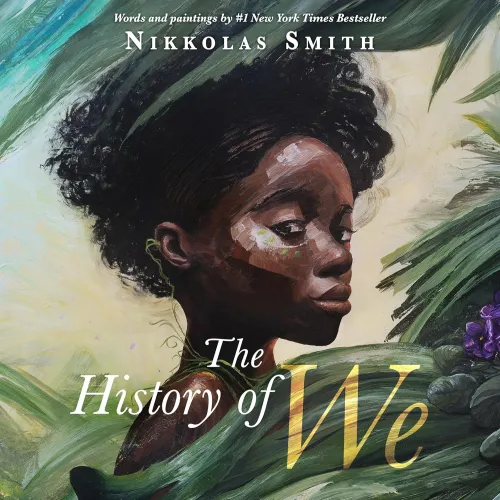Share this book
The History of We is built for a shared experience. Invite students’ extended families and community members to an intergenerational event that centers our shared human ancestry, the power of storytelling, and the creative achievements of humans. Hold your event in the gym, library, or community center—somewhere with enough space for people of all ages to sit together in small groups. Project or display pages from The History of We so that everyone can experience the illustrations as the book is read aloud by readers from different age groups, whose rotating voices symbolize human history flowing from one generation to the next.
After the read-aloud, invite the groups to reflect together on how the early humans in the story laid the foundation for who we are now. Ask them to think about what parts of their lives—how they work together, create, solve problems, or share stories—might be echoes of those earliest humans’ courage, curiosity, grace, and skill. Encourage them to share stories from their own families or communities that show these timeless human traits in action today.
Then ask groups to create a shared piece that includes their individual simple drawings, short poems, or a few words—that capture how the spirit of those early humans lives on in their own lives. Encourage them to think about why qualities like courage, curiosity, and grace are still important today—how these traits help us solve problems, connect with others, and build communities. The idea is to express how the past and present connect through the qualities that make us human, and to celebrate how each person carries a part of that ongoing story.
Groups can then share their creations aloud or display them together in the space, creating a living tapestry of how the human story continues in many different ways.
Questions for Discussion or Reflective Writing
- Where can everyone on Earth trace their ancestry back to? Was this something you had learned before or was it new information for you? Why do you think it’s important to know that all humans share this origin? How does this affect how we see each other today?
- How does the use of the word “we” make you feel included in this story of the past? How does learning this history help you think about the present and future?
- What do you think it means to be human? What does science tell us about how humans developed as a species? Are all humans from one species?
- What kind of relationship did early humans have with the world around them? How did we populate the planet?
- How is science important to understanding the history of humans? What can scientists tell us about our ancestors’ achievements? Why is it valuable to understand this science and history?
- How do the illustrations help show the history? How do these paintings compare with how you usually see history shown in books or media? What emotions do the colors and expressions bring up? How would you describe the movement in the illustrations? What does it convey?
Related Resources
The History of We by Nikkolas Smith: From Idea to Creative Process from Nikkolas Smith
Telling the story of humanity’s origins in Africa—this time, for kids from National Geographic
Human Characteristics: Humans Change the World and One Species, Living Worldwide from Smithsonian National Museum of Natural History
More Titles to Try
-
Before the Ships: The Birth of Black Excellence
Maisha Oso
-
Blue: A History of the Color as Deep as the Sea and as Wide as the Sky
Nana Ekua Brew-Hammond, illustrated by Daniel Minter
-
The 1619 Project: Born on the Water
Nikole Hannah-Jones and Renée Watson, illustrated by Nikkolas Smith
-
The Stuff of Stars
Marion Dane Bauer, illustrated by Ekua Holmes
-
What Makes Us Human
Victor D. O. Santos, illustrated by Anna Forlati
Stay on top of current education news



